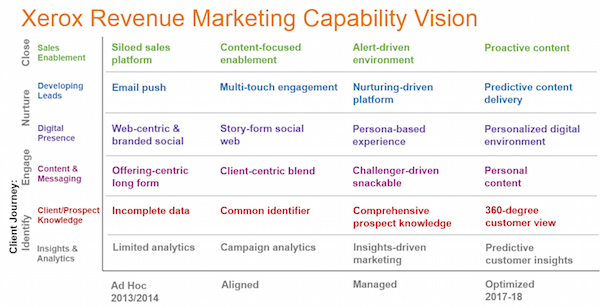

Yes, that’s a sparkling, rainbow-colored unicorn kitten with butterfly wings.
This came up in the following Q&A I had with marketing technology analyst extraordinaire David Raab.
If you don’t yet know David, you may be scratching your head, wondering just what kind of Q&A I was running here.
But if you do know him, you can certainly imagine him writing on his blog, in the context of explaining how customer data platforms (CDPs) can give marketers the multi-source customer database of their dreams, “Having that gate unlocked leads marketers to a candy-colored fairyland where unicorns dance with butterflies on rainbows made of gumdrops.” That’s a quintessential Raab-ism.
David is, hands down, one of the smartest analysts in the marketing technology space. His blog, Customer Experience Matrix, is a wellspring of candid write-ups of products and vendors, especially in the categories of marketing automation and CDPs — a blossoming category that he christened. If you’re wondering what a CDP actually is, the best place to start is David’s post from earlier this year: Customer Data Platforms Revisited: The Future of Marketing Data.
It’s also a great example of how David’s writing reveals the larger trends in our industry, taking very complex and amorphous concepts and taming them with lucid prose and illuminating diagrams. All of which would be brilliant on its own, served straight up. But he simultaneously intermingles a dry sense of humor, talking about manure crises, hoverboards, and advertising-supported toasters. Each of those references is worth a chuckle, but if you read the posts, you’ll also see the points he was making with them that will definitely make you think.
David has been on the advisory board of the MarTech conference since it’s inception, for which I am immensely grateful. At our next event coming up at the end of this month — have you registered yet? — he’ll be giving a TED-style talk: Customer Data Platforms: This Doesn’t Change Everything (But It Changes Enough Things To Matter).
I can’t guarantee that there will be unicorn kittens in his deck — although I wouldn’t be surprised if there were. But I am quite certain, however, he’ll provide an insightful explanation of what CDPs mean to marketers in the evolution of their marketing technology capabilities.
In the meantime, here’s what he had to say for 7 questions on marketing tech:
1. Tell us a little about your background and your current work.
I started out as a direct marketer, selling magazines and continuities by mail. Back then, it was an obscure little corner of the marketing industry, what with using customer lists on computers and basing decisions on data and such. The cool kids were all doing brand advertising on TV.
Fast-forward several, um, years. Today I spend my time helping marketers to understand how to use technology and deciding which systems to buy so they build something that will work now and tomorrow. And I still do a bit of hands-on marketing and data analysis, the principles of which have changed surprisingly little since the old days.
2. What are some of the most common myths you hear about marketing technology?
I guess the biggest myth is that it doesn’t matter which products you buy in a given category because they’re pretty much the same.
In fact, there are often really big differences in how systems perform and what functions they provide. But it’s often the little differences that matter to a particular buyer: if you need something that can, say, have campaign reports combine email and Web form responses on a single page, it turns out that many systems don’t do that. You’d never know until you look specifically for that feature. That’s why I’m forever haranguing people about defining their requirements in detail in advance.
3. What do you think is the toughest challenge marketers face with marketing technology? What advice do you give them for that?
The biggest challenge is having the patience to really test products thoroughly before they buy. Nobody really wants to spend time on this — the buyers are busy, the IT people supporting them have other work, and the vendors just want to close out the deal and move on the next one.
The biggest challenge is having the patience to really test products thoroughly before they buy. Nobody really wants to spend time on this.
My advice is generally along the lines of “eat your spinach.” It may be tough to find time to do this correctly, but you’re going to really regret it if you install the system and then find it doesn’t do what you wanted. If there’s a silver lining I can offer, it’s that most of the work you’d do to prepare for a test is work you’ll do later anyway as you prepare for deployment. So doing it now will save you time later and doesn’t really increase the total amount of work overall.
(In fact, it does increase the work a bit because you might do something three times when testing three different vendors vs. just once if you wait until after the purchase. But it’s still a lot less painful than dealing with the result of a bad decision.)
4. You also advise marketing technology vendors. How can a martech vendor break through the deafening noise of such a large marketing technology landscape?
That’s really the problem faced by all sellers today, isn’t it?
Martech is a little harder to buy or sell because everything is new and changing rapidly, so buyers don’t really understand what they need or even what the products do. So marketers need to do a lot of educating about the category in general and what their product does. Sales are often still not competitive in the sense of buyers looking at multiple solutions, so competitive comparisons are not always the key to success.
Martech is a little harder to buy or sell because everything is new and changing rapidly, so buyers don’t really understand what they need or even what the products do.
In terms of breaking through the noise, that’s marketing 101 stuff: have a clear message, be memorable, show benefits, etc. Of course, the strategy also depends on whether you have enough money to buy a lot of attention and whether you’re up against well-known competition. And on a bunch of other things — as I say, all the basic marketing parameters come into play.
5. Are there categories of marketing technology that you think are still ripe for innovation?
I think they all are. Some of the most interesting things I’m seeing now are companies reinventing established categories like email and marketing automation. What we actually see are different waves of innovation arriving at different times but all visible at the same moment.
What we actually see are different waves of innovation arriving at different times but all visible at the same moment.
So you have standard B2B marketing automation products that have now been around for ten years or longer and frankly haven’t changed much. You see a second or third generation of systems with similar functions but more modern interfaces and, in some cases, more flexible underlying architecture. And off there in distance I can see, or imagine I see, some truly new approaches that are built around things like mobile, social, and Internet of Things.
I can’t see the details clearly but know if you redesign marketing systems from the ground up to take advantage of the new technologies, they will look quite different from what we have today.
6. Do you think we’ll see a large-scale, open source marketing technology platform?
They already exist in bits and pieces, such as CRM, predictive modeling, Web content management, and customer data management. There’s even an open source marketing automation project called Mautic. It wouldn’t be hard to pull the pieces together into a complete stack, which is much more than just marketing automation.
But big enterprises will want a commercial vendor who provides support. So will little enterprises, come to think of it. So what you’ll probably see are open source components bundled together into commercial products. Eventually, as functions become better understood, you might see people more comfortable with open source solutions. Look at web content management, where open source solutions like Drupal, Joomla, and WordPress are increasingly important.
7. You’re giving a talk on customer data platforms (CDPs) — a category that you first identified — at MarTech later this month. (Thank you!) What’s the most interesting aspect of CDPs that you want marketers to recognize?
The thing I really want marketers to understand about CDPs is that they actually exist: there are solutions today that let them build the multi-source customer database of their dreams. Lack of those databases has held marketers back from doing many important things. So having that gate unlocked leads marketers to a candy-colored fairyland where unicorns dance with butterflies on rainbows made of gumdrops.
There are solutions today that let marketers build the multi-source customer database of their dreams.
Sorry, I get carried away. The point is that CDPs are a huge opportunity for marketers to solve a fundamental problem, so they should take advantage of them as quickly as possible.
Thank you, David — really looking forward to your presentation at MarTech!



Thank you for the information. I found it to be very useful.
I’d love to learn more about open source marketing stacks.
tnx for this article